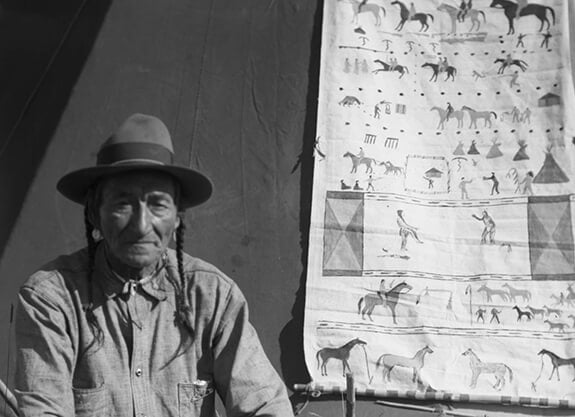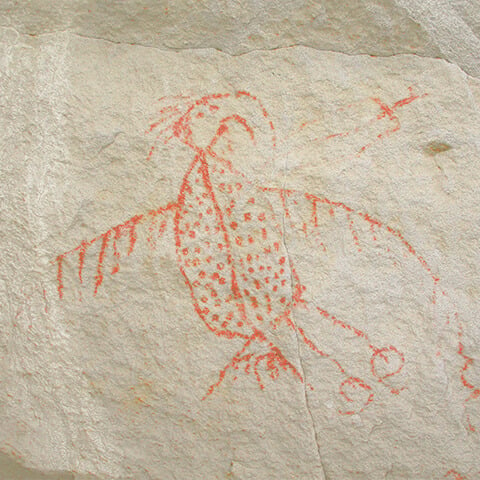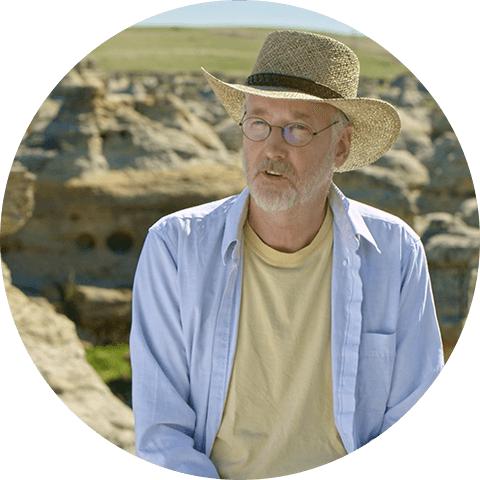Bird Rattle, Bearer of Traditions
Bird Rattle (ca. 1861-1937) and Split Ears, two Piikáni elders, journeyed to Áísínai’pi in September 1924 with American travel companions. During their stay, Bird Rattle explained that the rock art images at the site conveyed messages from the Spirit World to warn humans about some danger, show the location of buffalo and predict future events. To commemorate their significant visit to this sacred site, Bird Rattle carved two cars with passengers on a road. This gesture clearly shows continuity of the biographic rock art tradition and the ongoing importance of this place for the Niitsítapi.
Bird Rattle, Edward S. Curtis, circa 1909-1910
Photo: ©Library of Congress, Collection of Edward S. Curtis, LC-USZ62-101251














































